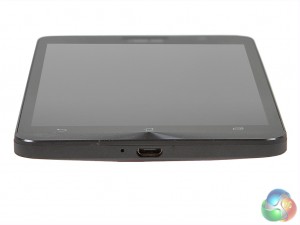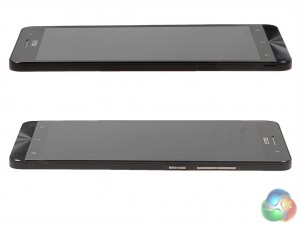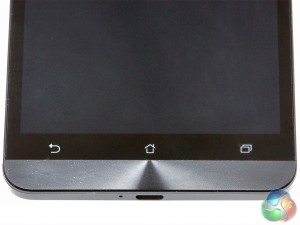
The Asus ZenFone 6 is a pleasing and simple design -it is mostly made from matte plastic. While it does not have the same premium feel as the all-metal Samsung A-series phones, it feels classy and smooth in the palm. The front has a slim bezel, with home, back and recent apps buttons at the bottom – rather than soft-keys like on the Nexus 6.
The back has a slight curve and is comfortable to hold one-handed.
Due to the phone's dimensions, however, most operations necessitate a two-handed approach. This is because, to accommodate the 6″ display, ASUS had to make the handset 166.9mm (6.57″) long, and 84.3mm wide (3.32″). This means, in comparison to the Nexus 6 with its same display size, it is 7.6mm longer and 1.3mm wider. This makes one-handed use challenging indeed. But we feel if you plump for a 6″ device, you know what you're getting into so this isn't a major obstacle for most consumers.

Indeed, ASUS have actually done very well to fit the 6″ display into the space they have – the ZenFone features a 70.9% screen-to-body ratio, which is particularly impressive considering the home buttons aren't part of the display, as with the Nexus. We feel separate buttons is a good move as it means all 6″ of the screen is usable, rather than about 5.75″ for the Nexus, due to the soft-keys take up screen space.
Also noteworthy is the thickness of the ZenFone. Coming in at 9.9mm, it's not exactly in the same league as the iPhone 6's 6.9mm thick body. However, for larger phones, and the larger batteries needed to accommodate them, this is impressive. The Nexus 6, for example, is 10.1mm thick.

We should also mention that the ZenFone weighs in at 196g, 12g more than the Nexus – a negligible difference.
The rest of the design is fairly straightforward. There is the standard microUSB port at the bottom of the phone, a volume rocker on the right-hand edge of the phone, and the on/off button just below it. It is worth mentioning that the on/off switch has been cleverly positioned in the middle of the device to make reaching it easy for your thumb. A headphone jack at the top-left edge completes the build.
 KitGuru KitGuru.net – Tech News | Hardware News | Hardware Reviews | IOS | Mobile | Gaming | Graphics Cards
KitGuru KitGuru.net – Tech News | Hardware News | Hardware Reviews | IOS | Mobile | Gaming | Graphics Cards


